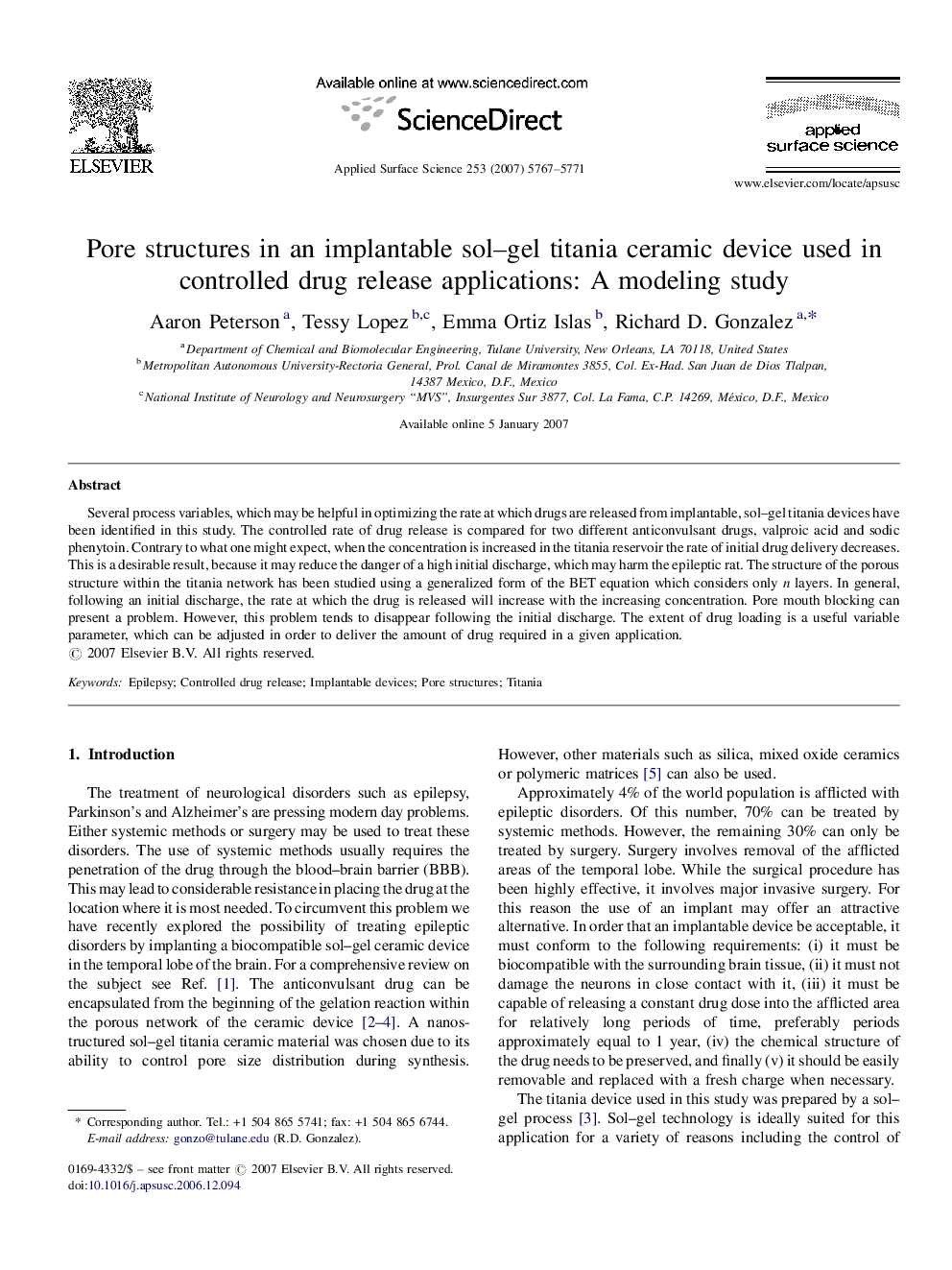| Article ID | Journal | Published Year | Pages | File Type |
|---|---|---|---|---|
| 5369741 | Applied Surface Science | 2007 | 5 Pages |
Several process variables, which may be helpful in optimizing the rate at which drugs are released from implantable, sol-gel titania devices have been identified in this study. The controlled rate of drug release is compared for two different anticonvulsant drugs, valproic acid and sodic phenytoin. Contrary to what one might expect, when the concentration is increased in the titania reservoir the rate of initial drug delivery decreases. This is a desirable result, because it may reduce the danger of a high initial discharge, which may harm the epileptic rat. The structure of the porous structure within the titania network has been studied using a generalized form of the BET equation which considers only n layers. In general, following an initial discharge, the rate at which the drug is released will increase with the increasing concentration. Pore mouth blocking can present a problem. However, this problem tends to disappear following the initial discharge. The extent of drug loading is a useful variable parameter, which can be adjusted in order to deliver the amount of drug required in a given application.
